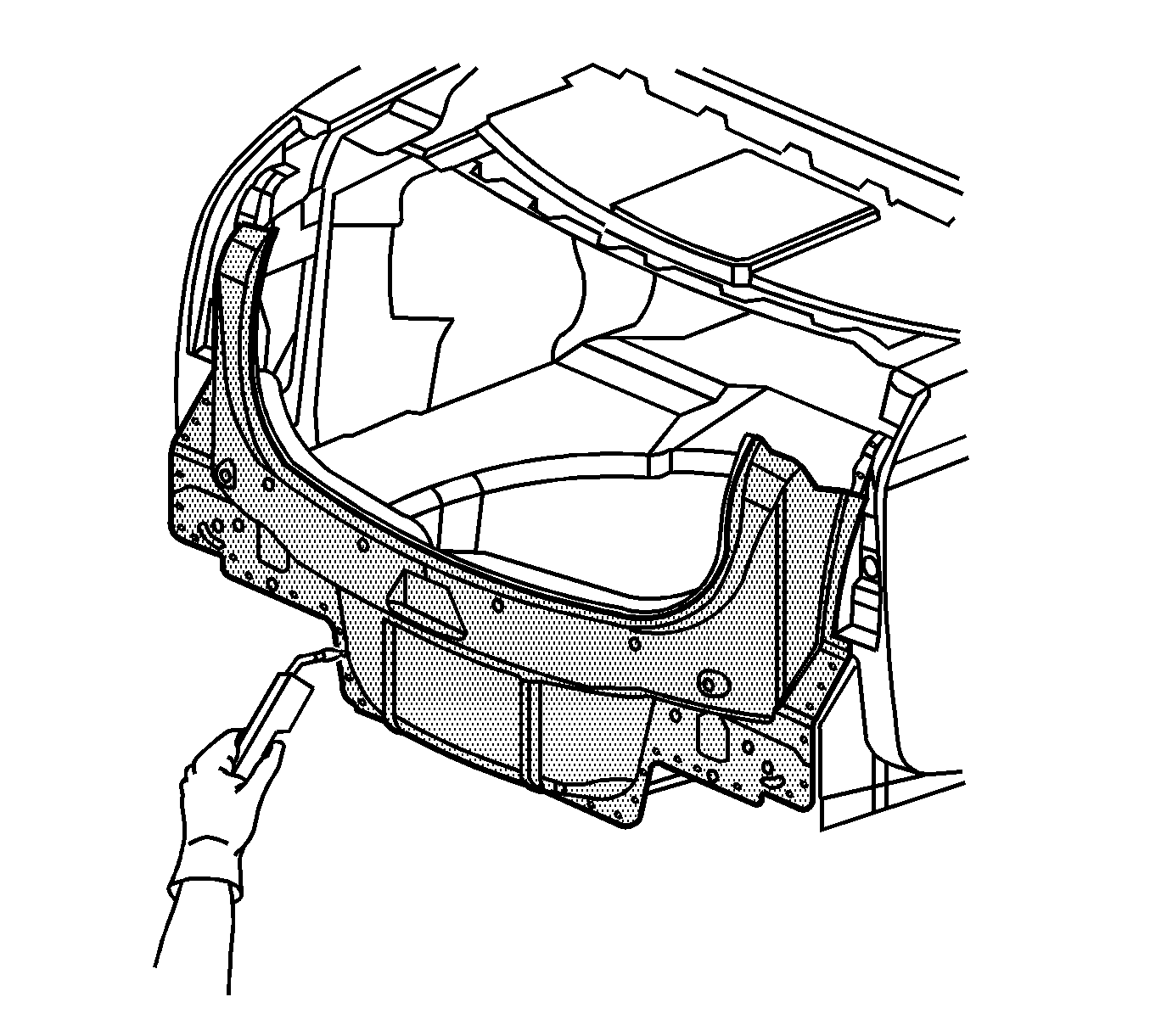For 1990-2009 cars only
Removal Procedure
Warning: Refer to Approved Equipment for Collision Repair Warning in the Preface section.
Note: This panel is replaced at factory seams.
- Disable the SIR system. Refer to SIR Disabling and Enabling .
- Disconnect the negative battery cable. Refer to Battery Negative Cable Disconnection and Connection .
- Remove all related panels and components.
- Restore as much of the damage as possible .
- Remove the sealers and anti-corrosion materials from the repair area if necessary. Refer to Anti-Corrosion Treatment and Repair .
- Locate, mark, and drill out all the necessary factory welds.
- Remove the rear end panel.
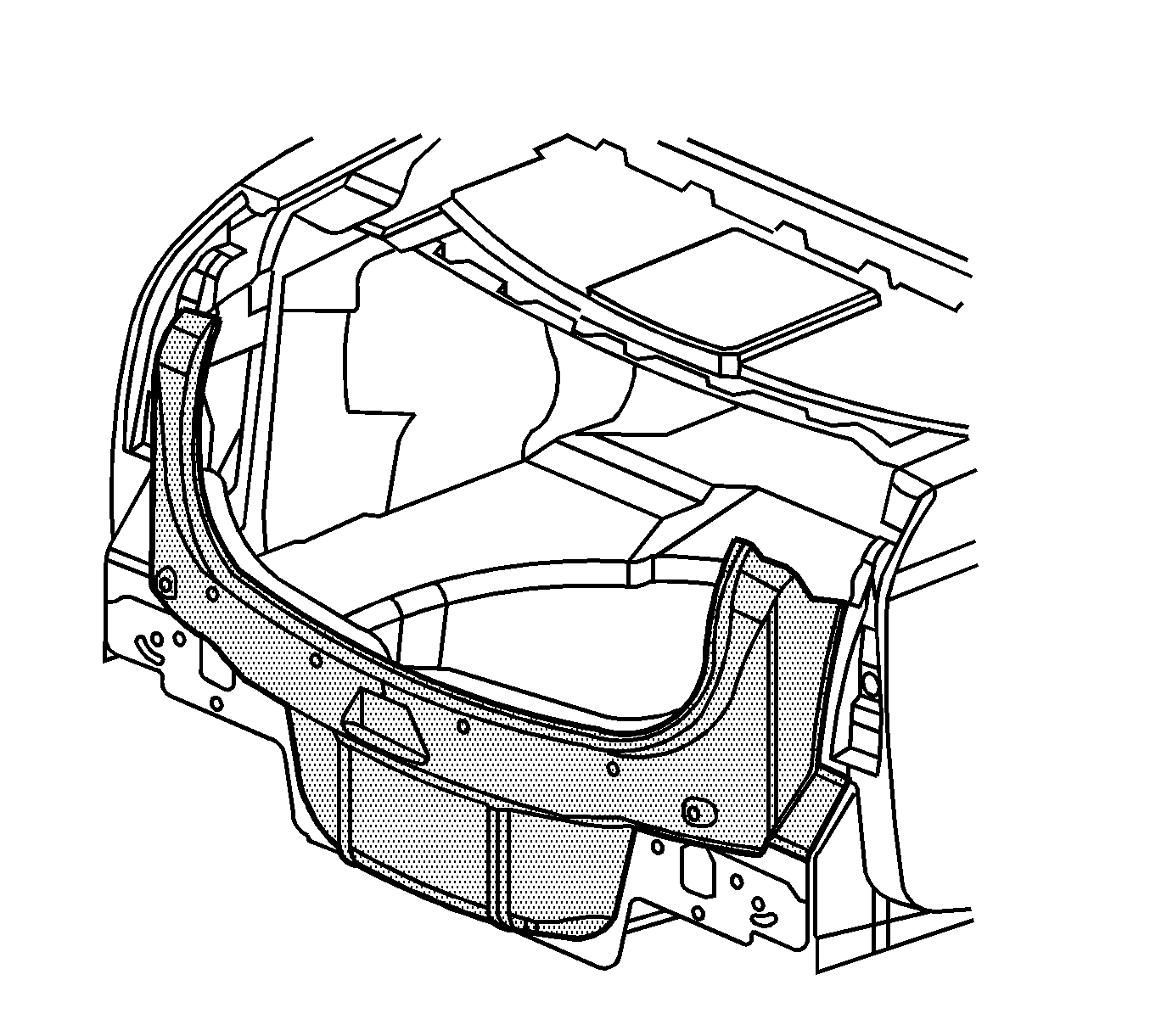
Warning: Sectioning should be performed only in the recommended areas. Failure to do so may compromise the structural integrity of the vehicle and cause personal injury if the vehicle is in a collision.
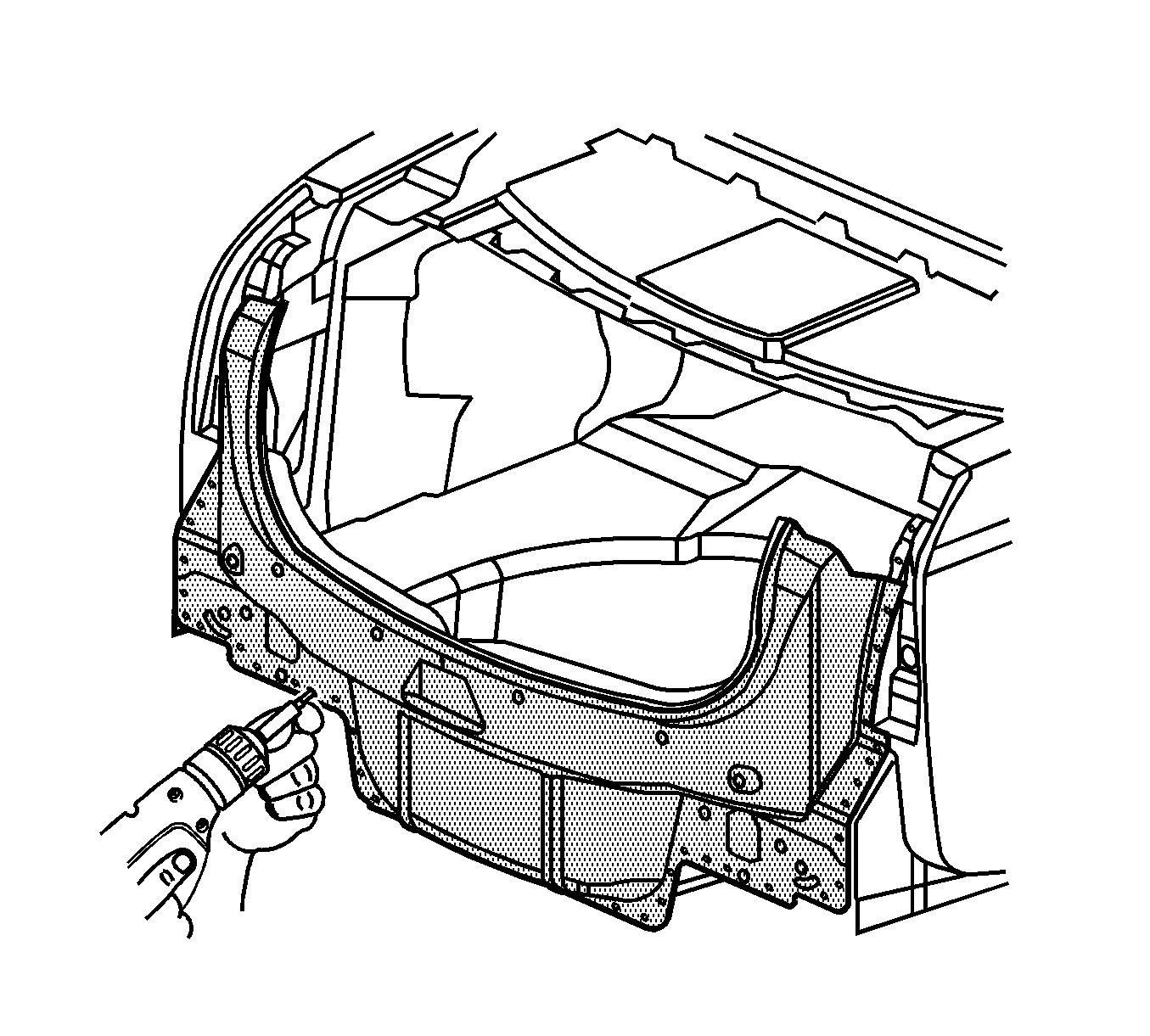
Note: Note the number and location of the factory welds for installation of the rear end panel.
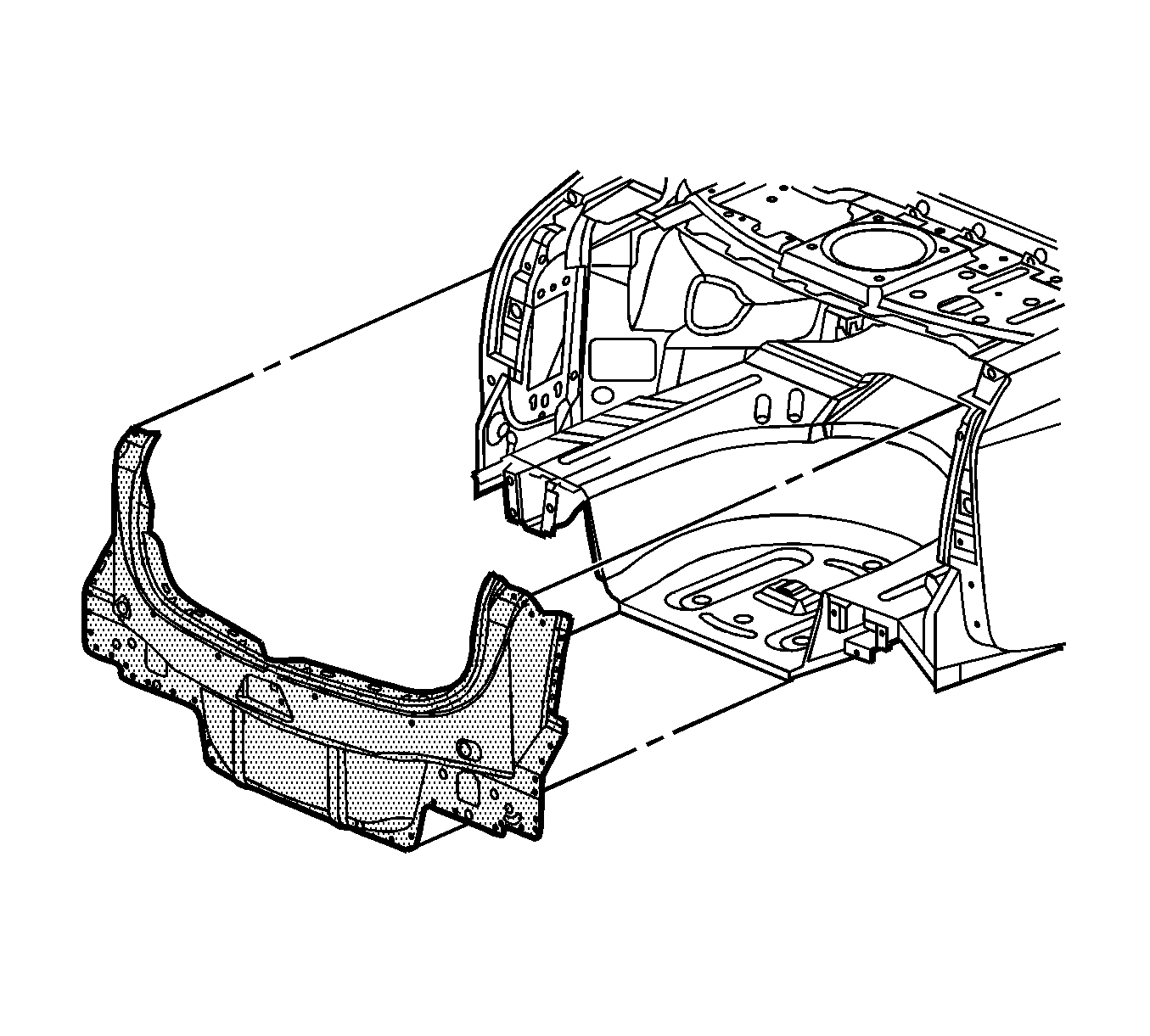
Installation Procedure
- Drill 8 mm (5/16 in) plug weld holes on the service part as necessary in the locations noted from the original panels.
- Prepare all mating surfaces as necessary.
- Apply 3M Weld-Thru Coating P/N 05913 or equivalent to all mating surfaces.
- Position the rear end panel.
- Plug weld accordingly.
- Clean and prepare all welded surfaces.
- Install all the related panels and components.
- Apply the sealers and anti-corrosion materials to the repair area if necessary. Refer to Anti-Corrosion Treatment and Repair .
- Paint the repaired area. Refer to Basecoat/Clearcoat Paint Systems .
- Connect the negative battery cable. Refer to Battery Negative Cable Disconnection and Connection .
- Enable the SIR system. Refer to SIR Disabling and Enabling .
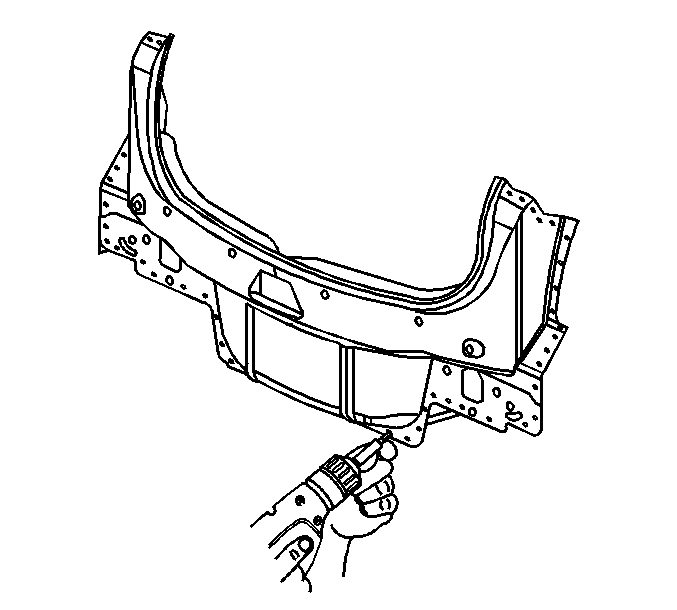
Note: If the location of the original plug weld holes can not be determined, or if structural weld-thru adhesive is present, space the plug weld holes every 40 mm (1.5 in).

